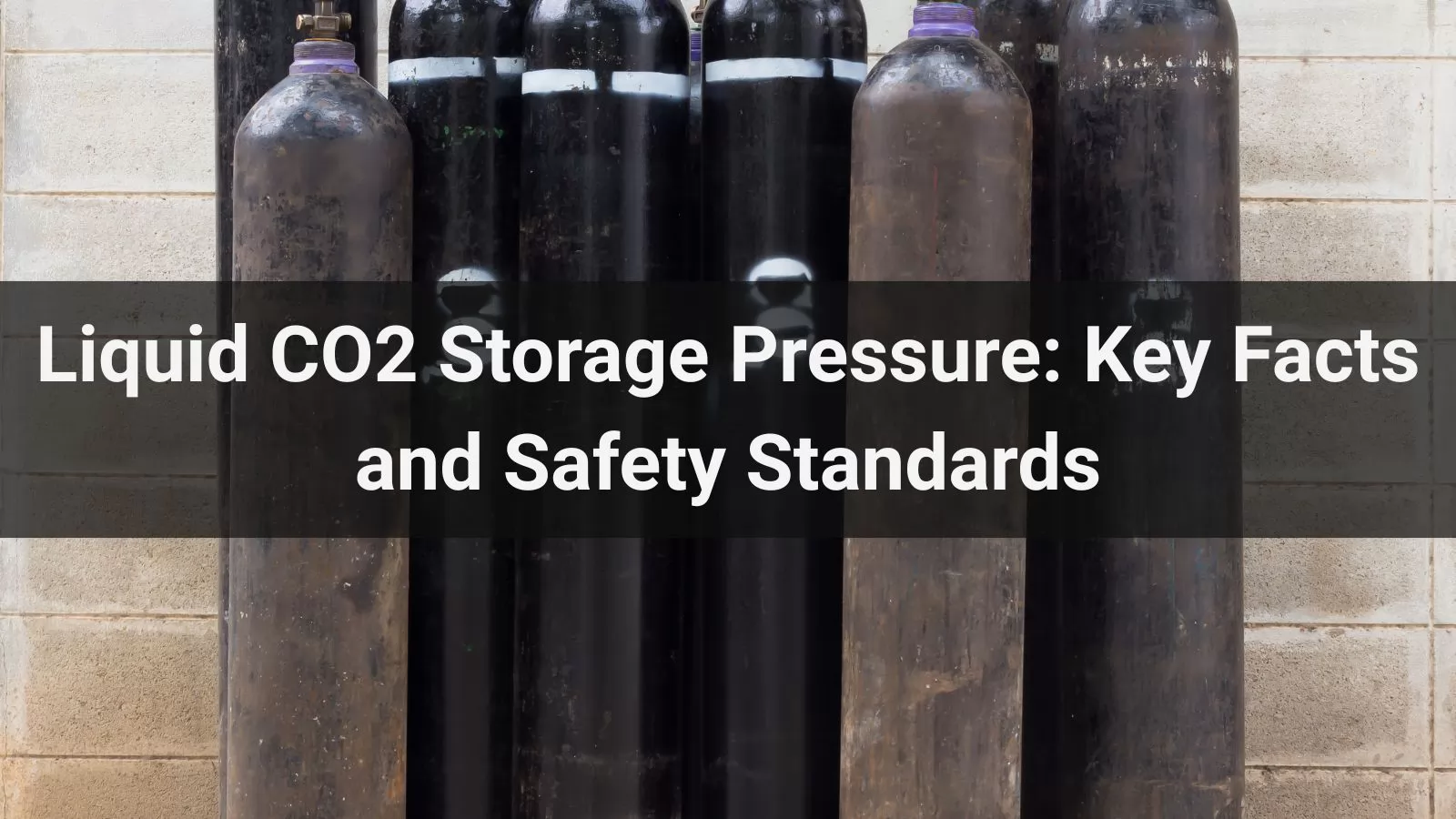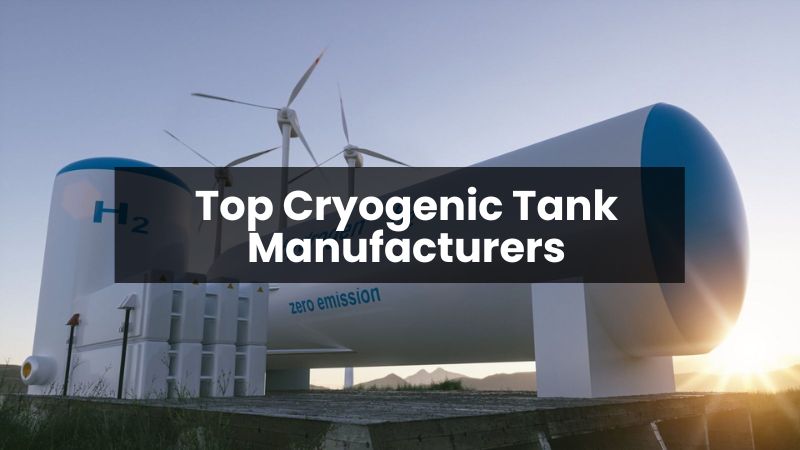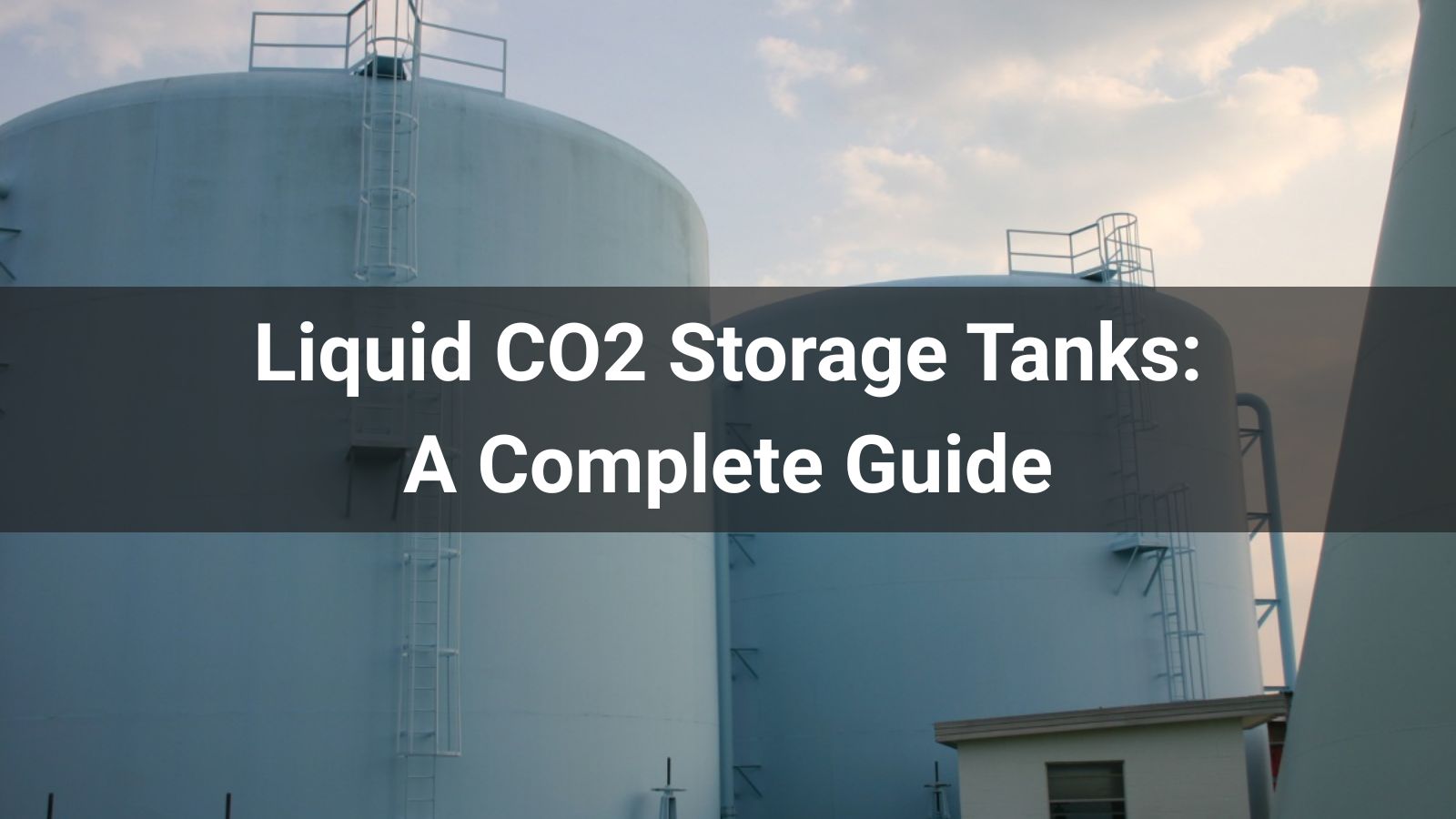






Liquid carbon dioxide (CO₂) is a versatile industrial commodity used in food processing, beverage carbonation, firefighting, welding, and enhanced oil recovery. To store CO₂ in its liquid form, it must be kept under specific pressure and temperature conditions. This article explains the liquid CO₂ storage pressure requirements, the science behind CO₂ liquefaction, relevant safety standards, and practical guidelines for industrial operations.
Carbon dioxide exists naturally as a gas at atmospheric pressure. To transform it into a liquid, both temperature and pressure must be carefully controlled. The CO₂ phase diagram shows that CO₂ becomes liquid only when pressure is above its triple point (5.18 bar / 75 psi) and temperature is below 31.1°C (88°F), known as the critical temperature.
In industrial storage, liquid CO₂ is typically kept at pressures between 12–22 bar (174–319 psi), depending on the storage design and ambient temperature. Below these pressures, the CO₂ would revert to a gas; above them, storage vessel stress and safety become major concerns.
Liquid CO₂ can be stored in various container types, each with its own pressure requirements:
In liquid CO₂ storage, pressure and temperature are directly related by CO₂’s vapor pressure curve. For example:
This is why many bulk CO₂ tanks are equipped with refrigeration systems to keep temperatures low, thus reducing internal pressure.
To ensure safety and compliance, liquid CO₂ storage systems must meet recognized industry and governmental standards, such as:
Storing liquid CO₂ outside its recommended pressure range can result in serious hazards:
Cryo-Tech offers a full range of CO₂ storage and transport solutions engineered to meet stringent safety and performance standards. Their products include:
With global certifications, custom design capabilities, and robust after-sales service, Cryo-Tech ensures CO₂ storage systems are both compliant and operationally efficient.
Emerging trends in CO₂ storage include improved insulation materials to reduce heat ingress, AI-powered monitoring for predictive maintenance, and hybrid vessels capable of handling multiple cryogenic gases. These innovations will further improve safety, reduce energy costs, and expand CO₂ applications in industries such as carbon capture and utilization (CCU).
Liquid CO₂ storage pressure is a critical parameter that determines operational safety, equipment lifespan, and product quality. By understanding the relationship between pressure, temperature, and CO₂ phase behavior—and by complying with international safety standards—industries can safely harness the benefits of liquid CO₂. With advanced solutions from companies like Cryo-Tech, businesses can achieve both safety and efficiency in CO₂ storage and transport.



![Top 10 Cryogenic Companies in USA[2025 Updated]](/statics/images/right.png)
![Top 10 Cryogenic Companies in USA[2025 Updated]](/uploads/202508/bannerlist_1756363009_WNo_800d450.jpg)



